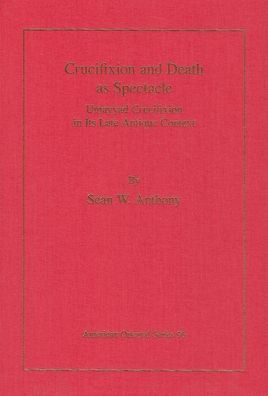Crucifixion and Death as Spectacle: Umayyad Crucifixion in Its Late Antique Context
What historical continuity, if any, existed between the practice of crucifixion in the early Islamic polity and crucifixion as practiced by the Byzantines in the Late Roman empire and by the Sasanids in Persia? Crucifixion and Death as Spectacle explores how the first caliphal dynasty of early Islam, the Umayyads, employed crucifixion in its sundry forms to punish brigands and heretics and to humiliate rebels and enemies, and how, while doing so, the Umayyads drew upon a late antique legacy of punitive practices associated with crucifixion in the Late Roman and Sasanid Persian worlds. Like their Roman and Persian predecessors, the Umayyads wielded crucifixion, and thus the symbolism of violence against the body, to attest to their impunity as caliphs and the legitimacy of their rule. Yet, as this study also argues, this is only one side of the story. Dissidents and political rivals mobilized stories of crucified rebels and martyrs, as told and memorialized by Christians and Muslims alike, against the Umayyads in order to contest and subvert the sublimation of crucifixion as an indubitable symbol of the caliphs’ use of legitimate violence, and succeeded in propagating alternative religious and political ideologies of their own.
1136633530
Crucifixion and Death as Spectacle: Umayyad Crucifixion in Its Late Antique Context
What historical continuity, if any, existed between the practice of crucifixion in the early Islamic polity and crucifixion as practiced by the Byzantines in the Late Roman empire and by the Sasanids in Persia? Crucifixion and Death as Spectacle explores how the first caliphal dynasty of early Islam, the Umayyads, employed crucifixion in its sundry forms to punish brigands and heretics and to humiliate rebels and enemies, and how, while doing so, the Umayyads drew upon a late antique legacy of punitive practices associated with crucifixion in the Late Roman and Sasanid Persian worlds. Like their Roman and Persian predecessors, the Umayyads wielded crucifixion, and thus the symbolism of violence against the body, to attest to their impunity as caliphs and the legitimacy of their rule. Yet, as this study also argues, this is only one side of the story. Dissidents and political rivals mobilized stories of crucified rebels and martyrs, as told and memorialized by Christians and Muslims alike, against the Umayyads in order to contest and subvert the sublimation of crucifixion as an indubitable symbol of the caliphs’ use of legitimate violence, and succeeded in propagating alternative religious and political ideologies of their own.
39.5
In Stock
5
1

Crucifixion and Death as Spectacle: Umayyad Crucifixion in Its Late Antique Context
110
Crucifixion and Death as Spectacle: Umayyad Crucifixion in Its Late Antique Context
110Hardcover
$39.50
39.5
In Stock

Product Details
| ISBN-13: | 9780940490376 |
|---|---|
| Publisher: | American Oriental Society |
| Publication date: | 03/21/2014 |
| Series: | American Oriental Series , #96 |
| Pages: | 110 |
| Product dimensions: | 6.50(w) x 1.50(h) x 9.50(d) |
From the B&N Reads Blog
